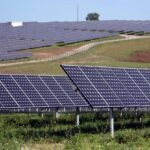In 2016, Kenya was on the verge of a transformational energy deal — a joint crude oil pipeline linking Uganda’s Hoima oilfields, Kenya’s Lokichar Basin, and the Port of Lamu. The plan was tied to the LAPSSET Corridor Development Authority (LCDA), a visionary program to position Kenya as East Africa’s energy and logistics hub.
- Kenya Chose the Wrong Turn
- 1. The Lost Strategic Energy Corridor
- 2. Missed Economic Multiplier Effects
- 3. Forex and Fuel Security Strain
- 4. Tanzania’s Rise, Kenya’s Stagnation
- 5. The Missed Transition: From Consumer to Controller
- 6. Why Kenya Lost the Deal
- 7. How Kenya Can Rebuild
- Tanzania’s $5B Gain vs. Kenya’s Loss
- What This Means for East Africa
- A Fork in the Road
But by 2017, Uganda had walked away, favoring a southern route via Tanzania.
Eight years later, the East African Crude Oil Pipeline (EACOP) is 64.5% complete. Spanning 1,443 kilometers from Hoima to the Port of Tanga, it is set to be the world’s longest heated crude oil pipeline when completed in 2027.
And with it, Uganda and Tanzania are building not just a pipeline, but a regional oil economy — while Kenya, once central to the plan, is now entirely excluded.
Kenya Chose the Wrong Turn
Business Consultant and Energy analyst Nathan Davids captures Kenya’s dilemma with stark clarity:
“The EACOP isn’t just a pipeline. It’s a strategic fork in the road. And Kenya chose the wrong turn. We must confront hard truths about how we negotiate, how we think regionally, and how quickly we lose ground when we fail to align vision with execution. Energy is not just a sector — it’s the currency of geopolitical relevance. And in this round, we blinked.”
1. The Lost Strategic Energy Corridor
By hosting EACOP, Kenya would have reaped:
- Transit fees and taxes worth hundreds of millions annually.
- New infrastructure revenues tied to crude export logistics.
- A revitalized Lamu Port as an anchor export hub.
Instead, Tanzania benefits from all of these, with African Development Bank projections showing foreign direct investment (FDI) rising over 60% during construction alone.
2. Missed Economic Multiplier Effects
EACOP’s presence could have driven:
- Refinery investments reducing Kenya’s fuel import reliance.
- Creation of regional storage and distribution hubs to stabilize fuel prices.
- Tens of thousands of direct and indirect jobs in construction and maintenance.
- Entry of energy majors like TotalEnergies and CNOOC into Kenya as long-term partners.
Instead, Kenya remains a premium fuel importer, paying extra in shipping and forex costs.
3. Forex and Fuel Security Strain
Every month, Kenya spends billions of dollars on imported fuel, driving forex demand and weakening the shilling.
Hosting EACOP could have allowed Kenya to:
- Negotiate preferential crude allocations.
- Build domestic refining capacity to cut import dependency.
- Develop strategic storage to manage supply shocks.
Instead, Kenya remains vulnerable to global fuel price swings and dollarized shipping costs.
4. Tanzania’s Rise, Kenya’s Stagnation
By 2027, Tanzania will host East Africa’s key oil export hub in Tanga, earning:
- Transit and tax revenues.
- A seat at the regional energy negotiation table.
- Long-term strategic partnerships with global buyers.
Meanwhile, Kenya’s LAPSSET Corridor risks becoming an underutilized investment, lacking the crude volumes to sustain Lamu Port.
5. The Missed Transition: From Consumer to Controller
The pipeline’s impact goes beyond cash flows. It’s about regional power.
Davids notes:
“It’s not just the missed taxes. It’s the missed transition — from middleman to producer, from consumer to controller. Uganda and Tanzania are laying foundations for a sovereign oil economy. Kenya is left trading in import licenses, subsidy politics, and price controls.”
Kenya is locked in as a consumer economy, while its neighbors build energy sovereignty.
6. Why Kenya Lost the Deal
Uganda’s decision was influenced by:
- Lower construction risks along the Tanzanian route.
- Faster approvals and incentives from Dar es Salaam.
- Kenya’s delays over security guarantees, environmental studies, and financing.
These factors combined to shift a $5 billion project south, leaving Kenya’s energy ambitions unfulfilled.
7. How Kenya Can Rebuild
Kenya’s energy strategy must urgently adapt:
- Fast-track Lokichar oil development, ensuring reserves don’t remain stranded.
- Explore refined product pipelines or mini-corridors linking Uganda and South Sudan.
- Invest in refining and storage to curb fuel import bills.
- Reposition LAPSSET with industrial zones, renewable energy projects, and diversified cargo.
- Lead in green energy — geothermal, wind, and solar — to balance the missed oil opportunity.
Tanzania’s $5B Gain vs. Kenya’s Loss
- $5 Billion+ in direct project value.
- 60%+ rise in FDI during construction.
- Thousands of jobs in logistics, pumping stations, and infrastructure.
- Transit and tax revenue streams projected to last 20+ years.
- Global recognition as East Africa’s oil export hub.
Kenya, by contrast, faces mounting fuel import costs, forex strain, and a stranded Lamu Port.
What This Means for East Africa
The EACOP shifts regional power dynamics. Uganda and Tanzania are poised to dominate oil logistics and energy influence, while Kenya risks economic marginalization.
For energy suppliers — from industrial pump manufacturers to predictive maintenance firms — the center of opportunity has shifted south.
A Fork in the Road
At 64.5% complete, the East African Crude Oil Pipeline is more than an engineering marvel. It is a marker of East Africa’s changing power.
Kenya’s hesitation and fragmented diplomacy cost it billions in future revenues and influence.
As Nathan Davids reminds us:
“Regional leadership is not inherited. It is earned through vision, negotiation, and execution. In this case, Kenya blinked — and the cost will be felt for decades.”
Kenya must now redefine its energy strategy — or risk becoming a permanent bystander in the region’s energy future.







